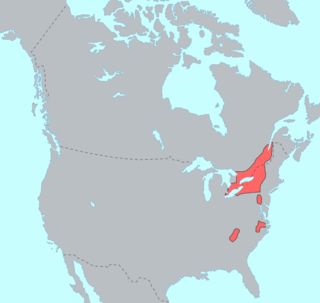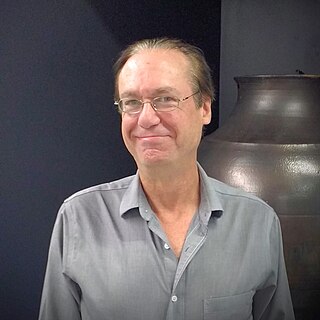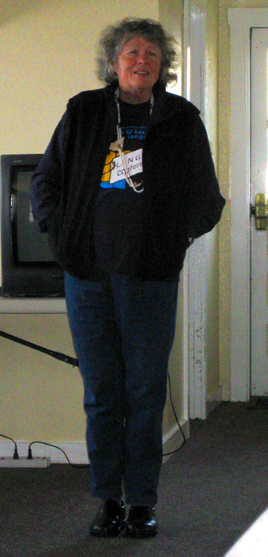Related Research Articles
Ethnologue: Languages of the World is an annual reference publication in print and online that provides statistics and other information on the living languages of the world. It is the world's most comprehensive catalogue of languages. It was first issued in 1951, and is now published by SIL International, an American evangelical Christian non-profit organization.

An endangered language or moribund language is a language that is at risk of disappearing as its speakers die out or shift to speaking other languages. Language loss occurs when the language has no more native speakers and becomes a "dead language". If no one can speak the language at all, it becomes an "extinct language". A dead language may still be studied through recordings or writings, but it is still dead or extinct unless there are fluent speakers. Although languages have always become extinct throughout human history, they are currently dying at an accelerated rate because of globalization, mass migration, cultural replacement, imperialism, neocolonialism and linguicide.
Language revitalization, also referred to as language revival or reversing language shift, is an attempt to halt or reverse the decline of a language or to revive an extinct one. Those involved can include linguists, cultural or community groups, or governments. Some argue for a distinction between language revival and language revitalization. There has only been one successful instance of a complete language revival, the Hebrew language, creating a new generation of native speakers without any pre-existing native speakers as a model.

The Iroquoian languages are a language family of indigenous peoples of North America. They are known for their general lack of labial consonants. The Iroquoian languages are polysynthetic and head-marking.

The Chickasaw language is a Native American language of the Muskogean family. It is agglutinative and follows the word order pattern of subject–object–verb (SOV). The language is closely related to, though perhaps not entirely mutually intelligible with, Choctaw. It is spoken by the Chickasaw tribe, now residing in Southeast Oklahoma, centered on Ada.
Hawaiʻi Sign Language or Hawaiian Sign Language, also known as Hoailona ʻŌlelo, Old Hawaiʻi Sign Language and Hawaiʻi Pidgin Sign Language is an indigenous sign language native to Hawaiʻi. Historical records document its presence on the islands as early as the 1820s, but HSL was not formally recognized by linguists until 2013.
Miami-Illinois, also known as Irenwa or Irenwe, is an indigenous Algonquian language spoken in the United States, primarily in Illinois, Missouri, Indiana, western Ohio and adjacent areas along the Mississippi River by the Miami and Wea as well as the tribes of the Illinois Confederation, including the Kaskaskia, Peoria, Tamaroa, and possibly Mitchigamea. The Myaamia (Miami) Nation of Indiana still practice and use their native heritage to teach young and old so they can keep their traditional language alive.
An indigenous language, or autochthonous language, is a language that is native to a region and spoken by its indigenous peoples. Indigenous languages are not necessarily national languages but they can be; for example, Aymara is both an indigenous language and an official language of Bolivia. Also, national languages are not necessarily indigenous to the country.

Douglas H. Whalen is an American linguist. He received his Ph.D. in linguistics from Yale University in 1982 as a student of Louis M. Goldstein. Since 2011 he has been a Distinguished Professor in the Speech-Language-Hearing Sciences program at the CUNY Graduate Center. He is a long-standing member of Haskins Laboratories in New Haven Connecticut, where he is a Senior Scientist and Vice President for Research. Whalen studies the relationship between speech production and speech perception from the perspective of the motor theory of speech perception.
The Center for American Indian Languages (CAIL) was a research and outreach arm of the Department of Linguistics at the University of Utah. Its mission was to assist community members in the maintenance and revitalization of endangered languages, to document these languages, and to train students to do this sort of work.

The Miami Tribe of Oklahoma is the only federally recognized Native American tribe of Miami Indians in the United States. The people are descended from Miami who were removed in the 19th century from their traditional territory in present-day Indiana, Michigan and Ohio.
The Survey of California and Other Indian Languages at the University of California at Berkeley documents, catalogs, and archives the indigenous languages of the Americas. The survey also hosts events related to language revitalization and preservation.

Leanne Hinton is an American linguist and emerita professor of linguistics at the University of California at Berkeley.
Tututni, also known as Upper Coquille, (Lower) Rogue River and Nuu-wee-ya, is an Athabaskan language once spoken by three Tututni tribes: Tututni tribe, Coquille tribe, and Chasta Costa tribe who are part of the Rogue River Indian peoples of southwestern Oregon. In 2006 students at Linfield College participated in a project to "revitalize the language." It is one of the four languages belonging to the Oregon Athabaskan cluster of the Pacific Coast Athabaskan languages.
In Breath of Life workshops, linguists help members of Native American communities access and use archival material documenting their ancestral languages in the interest of language restoration and revitalization. This is particularly important for the many communities that no longer have fluent speakers of their languages. They are held biannually in June at U.C. Berkeley and at the University of Oklahoma in Norman in even-numbered years, and at the Smithsonian Institution in Washington, DC in odd-numbered years. The project was initiated in the early 1990s at the University of California Berkeley, in part by linguist Leanne Hinton.
Colleen M. Fitzgerald is an American linguist who specializes in phonology, as well as language documentation and revitalization, especially with Native American languages.
Carol E. Genetti is an American linguist who is known for her research into Tibeto-Burman languages and languages of the Himalayans.
The Institute on Collaborative Language Research or CoLang is a biennial training institute in language documentation for any person interested in community-based, collaborative language work. CoLang has been described as part of a modern collaborative model in community-based methodologies of language revitalization and documentation.
The Endangered Languages Project (ELP) is a worldwide collaboration between indigenous language organizations, linguists, institutions of higher education, and key industry partners to strengthen endangered languages. The foundation of the project is a website, which launched in June 2012.
References
- ↑ "Daryl Baldwin – toopeeliyankwi, kati myaamiaataweeyankwi: We Succeed At Speaking The Myaamia Language | First Nations and Endangered Languages Program". fnel.arts.ubc.ca. Retrieved 2017-11-08.
- ↑ "Miami's Myaamia Project becomes Myaamia Center". Miami University News: News Release. 2013-03-05. Retrieved 2014-06-01.
- ↑ "Local group turns over 'forgotten' documents to Miami tribe | Huntington County Tab". www.huntingtoncountytab.com. Retrieved 2017-11-08.
- ↑ "MacArthur Foundation". www.macfound.org. Retrieved 2017-11-08.
- ↑ "News & Announcements | Kitloona Myaamiaki | Miami Tribe of Oklahoma". miamination.com. Retrieved 2017-11-14.
- ↑ Gerdts, Donna B. (2017). "Indigenous Linguists: Bringing Research into Language Revitalization". International Journal of American Linguistics. 83 (4): 607–617. doi:10.1086/693763. S2CID 149081645.
- ↑ "U.S. Department of State Launches Fifth Annual "Free the Press" Campaign". www.imperialvalleynews.com. 25 April 2016. Retrieved 2017-11-08.
- ↑ "Forbrukslån info". www.buffalopost.net. Retrieved 2017-11-08.
- ↑ "Staff – Myaamia Center". myaamiacenter.org. Retrieved 2017-11-08.
- ↑ Gugliotta, Guy (2014-01-20). "Smithsonian archives preserve lost and dying languages". The Washington Post. Retrieved 2014-02-27.
- ↑ "Breath of Life conference to help California Indians save endangered languages". Imperial Valley News. 2014-05-26. Retrieved 2014-06-01.
- ↑ "Shinnecock, Unkechaug Nations seek to revive their languages – 'the DNA of a culture' – lost for two centuries". The Buffalo Post. 2008-04-06. Archived from the original on 2014-06-01. Retrieved 2014-06-01.
- ↑ "National Breath of Life Archival Institute for Indigenous Languages | National Breath of Life is a two-week biennial Institute that brings Community Researchers from around North America to Washington, DC, to help them find and utilize their linguistic archival sources from archives located in the DC area. The institute took place May 29-June 9, 2017". nationalbreathoflife.org. Retrieved 2017-11-13.